Table of contents
What types of stones do you know?
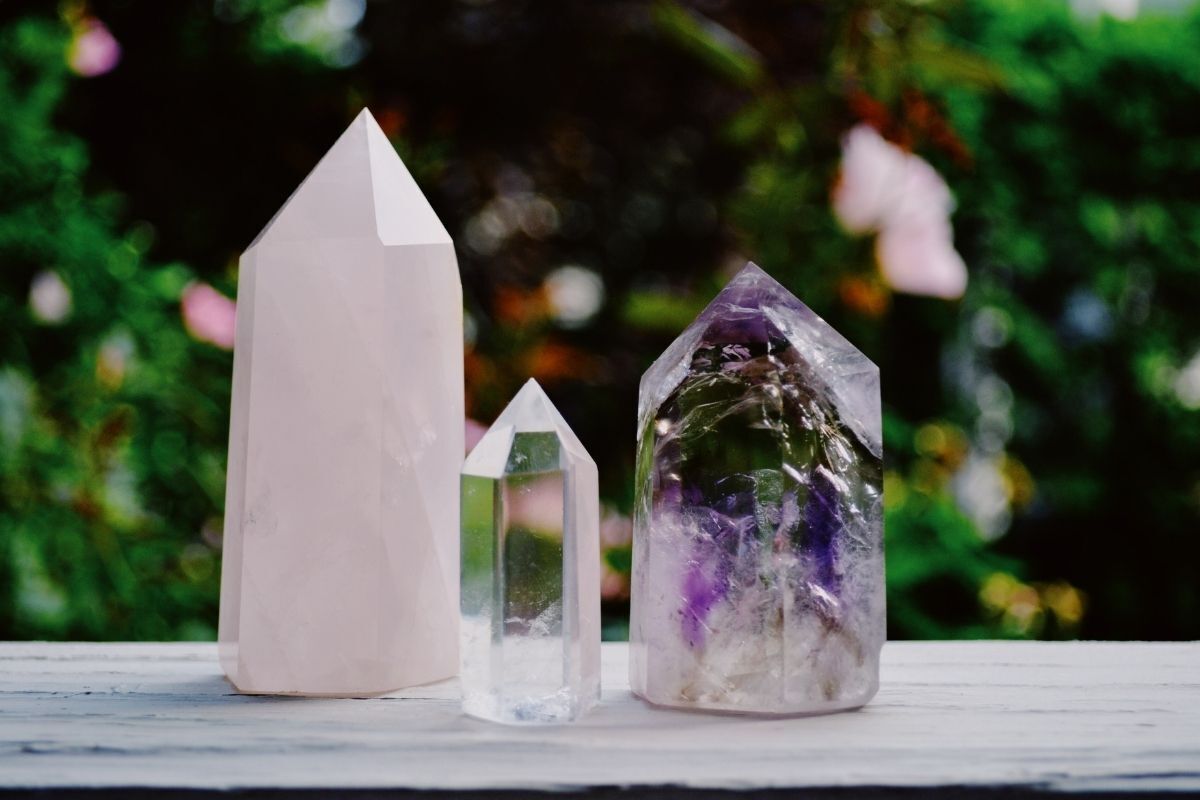
Stones are elements that have been present in natural life since the formation of this reality. Initially used as shelter against the elements, as a weapon or even as a tool, they became, as mankind began to develop, decorative items or jewelry.
With the arrival of the New Age, stones came to be known as crystals, a term that encompasses not only stones themselves, but other items of plant and animal origin that came to be employed resuming a set of ancestral practices of spirituality and healing.
But which stones do you know? To help you answer this question, we have brought you a real map about the origins of stones, also describing their importance and classifying them according to their type and formation.
As we show, some are natural others are synthetic, but all are beautiful, semi-precious or precious, and can adorn your life. Check them out!
Understanding more about the types of stones
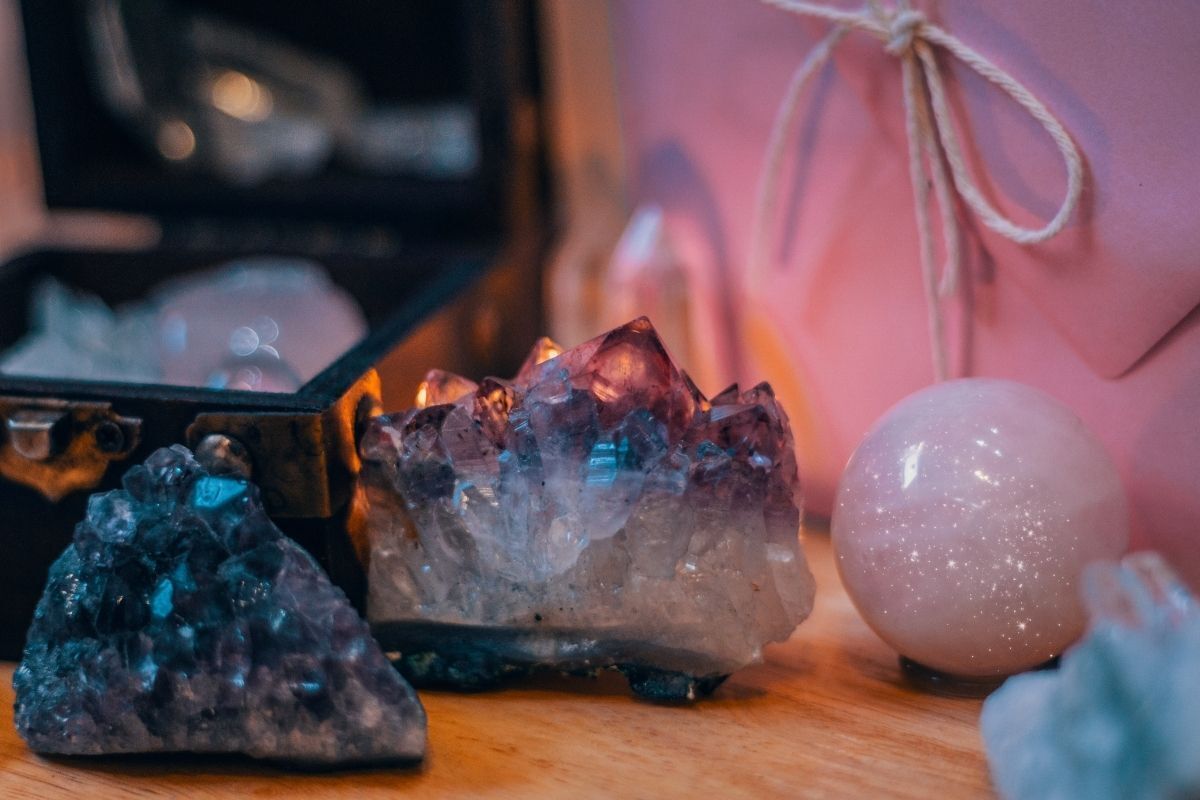
In this initial part, we present what gemstones are, in fact, precious stones. Then, we take a brief walk around their history and study, to finally deal with gems and relevant issues such as colors, prices, and tips to identify a gemstone, as well as the differences between precious and semi-precious stones.
What are precious stones?
Gemstones are predominantly items of natural origin that can be, through human intervention, transformed into valuable items such as jewelry and collectibles through a process known as cutting.
In other words, gemstones are items found from nature that become commercially valuable due to their transformation and start to play different uses and functions in people's daily lives through jewelry or other valuable items, for example.
The price of a gemstone varies widely according to a number of factors, including the difficulty of finding the material in nature, the natural formation process of obtaining the stone, and how specialized the cutting process is.
History of precious stones
The history of gemstones is intertwined with the history of humanity, since values are assigned to them according to human interaction and the society in which the stone is inserted. In general, what we know as gemstones refers to the set of gems that were used by clerics and higher classes, such as royalty.
These stones came to have the function of indicating a person's status. But they were also often used as an essential part of certain religious groups, thus adopted in ceremonies, worship rituals or devotional practices.
Therefore, they came to possess high value, since they were part of the social structure of quite specific groups.
Study and knowledge
The study of gemstones is part of mineralogy, the science dedicated to explaining physical and chemical aspects of minerals. From an esoteric and energetic point of view, the use of rocks and minerals for energetic and healing purposes is called lithotherapy (stone therapy) or crystallotherapy (crystal therapy).
Being an area of scientific knowledge, Mineralogy does not recognize the effects of lithotherapy, since the metaphysical effects are not measured by scientific methods. However, part of crystal therapy is based on the study of mineralogy.
Extraction
Gemstones are extracted through the process of mining. Many of them need to be dug deep into underground mines or may accumulate in places such as riverbeds or caves.
The process of mineral extraction can be very damaging to the environment. Therefore, the demand for gemstones that have been extracted with as little environmental impact as possible is growing.
Gems
The word gem comes from the Latin 'gemma' and is used to refer to precious or semi-precious stones. Although the term refers predominantly to minerals, they can be composed of rocks or other petrified materials which, after undergoing polishing or lapidation processes, are collectible or used as personal adornment, as is the case with jewellery.
Examples of gems include Amber, Emerald, Beryl, Garnet and Rhodochrosite.
Colors
Gemstones come in many different varieties of hues and colors. What determines the color of a gemstone is its chemical composition as well as external conditions such as lighting, temperature and atmospheric pressure.
In some cases, the same mineral can have different colorations, each of which has a distinct name. For example, Amethyst is a violet variation of Quartz, while Green Quartz, as the name suggests, is a green version of the same mineral.
Value
Gemstones are prized for their beauty and are therefore usually expensive. The characteristics that make a stone expensive include its structure, its degree of purity, the difficulty of occurring naturally, the intensity of its color, as well as optical phenomena or even inclusions within it, as is the case with fossilized gems.
The most precious gems are the Diamond, the Ruby, the Emerald and the Sapphire. Consequently, they are the most expensive, especially when they have a high degree of purity and natural origin.
Difference between precious and semi-precious stones
In general, gemstones belong to a relatively limited group of stones. They are often quite rare in nature and become expensive because they are difficult to access. Gemstones came to be called so because of their religious use, as they were regarded as cardinal gems.
Therefore, if a particular cleric used the stones to perform some religious or ceremonial function, they were called precious stones. Semi-precious stones, on the other hand, refer to the group of stones that have a market value but were not used to fulfill a religious role.
Therefore there is no scientific explanation to classify a stone between precious and semi-precious. The logic used, in this case, is mercadological.
How to know that a gemstone is real?
To distinguish a real gemstone from a fake one, you need to learn to develop your critical eye as well as your other senses. At first, you can tell if a gemstone is real by observing basic characteristics such as color and weight.
However, if you want a more accurate way to identify the value and authenticity of the stone, you need to analyze its interior. For this, you can contact an expert or examine them with instruments like microscope.
There are gemstone identification charts on the internet and, if you wish, you can turn to the chart released by the Gemological Institute of America, known as the IGA, in which precious tips are presented to know if your stone is real.
Types of stone origins
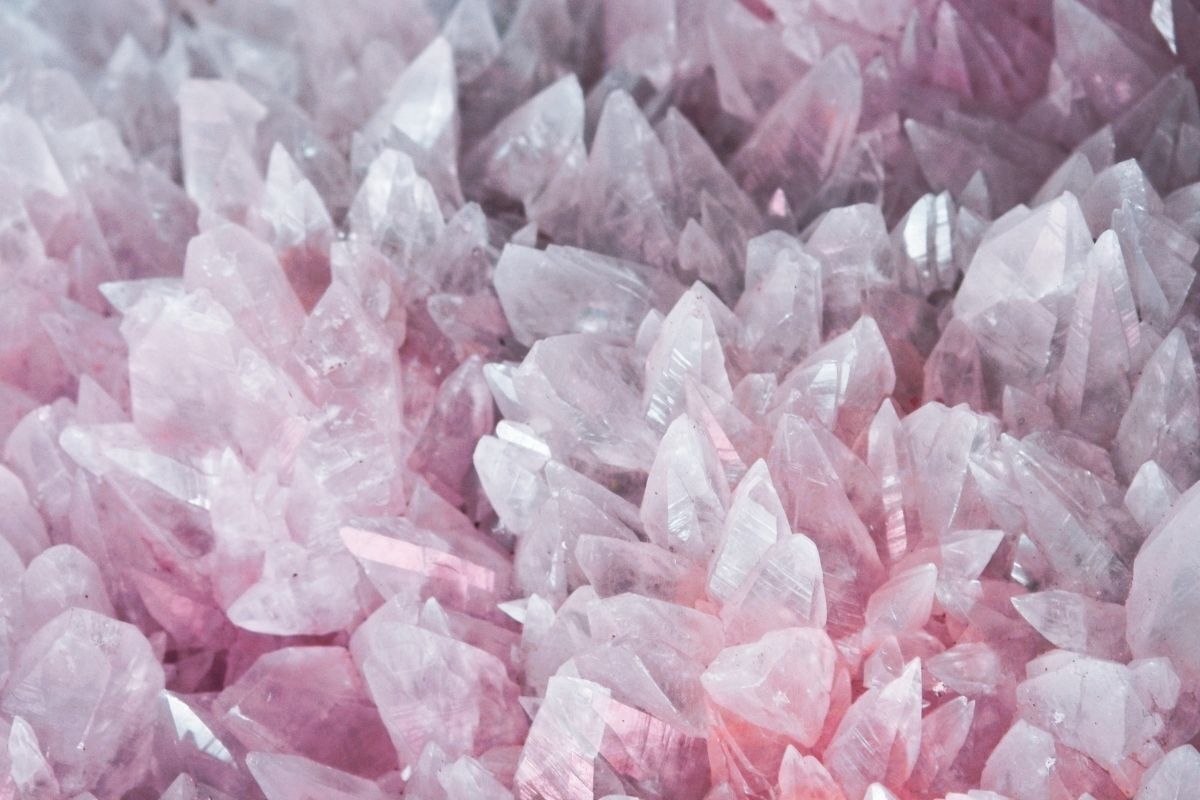
In this section, we will deal with the types of origins of stones, popularly known as crystals. As we will show below, crystals are not necessarily stones, as they can include under their spectrum items that have animal, vegetable and mineral origins. Understand more about these types and check out some examples below!
Animal origin
The first type of crystals have animal origin. This means that they are extracted from materials of organic origin that are expelled or produced by animals. In some cases, they are parts of the animals themselves, as is the case of coral, part of an organism that lives mainly in the oceans.
As examples of crystals of animal origin, we can cite the Pearl, Coral and Coprolite, which is nothing more than animal feces that were fossilized. For ethical and energetic issues, use Coral and Pearls that were found in nature on their walks. The energies of these elements extracted through trade are not favorable.
Plant origin
A very popular origin of crystals is vegetal. In this type of crystal, parts produced by plants, such as resins, have solidified or petrified through a long process of fossilization.
Classic examples of crystals of plant origin include Amber, which is nothing more than resin from fossilized coniferous trees and petrified wood. Another example is Azeviche, popularly known as Black Amber and which is endowed with supernatural powers, according to European folklore.
Mineral origin
The most common type of crystal is that of mineral origin. These stones original through the ages and different geological processes. With the variation of temperature and the accumulation of debris and chemical elements, stones are formed on the surface of the Earth. There are three basic types of formation of these stones and therefore we can classify them into:
Igneous: are the result of magma and lava cooling processes. Example: Obsidian, Granite and Basalt.
Metamorphic: are originated from the transformation of rocks through pressure and temperature variation. Example: Slate, Marble and Quartz
Sedimentary: are formed through the accumulation of waste, such as limestone.
As we have already mentioned, crystal is a term that covers different types of materials. Therefore, metals such as gold, silver and bronze, in their raw state, can also be considered crystals of mineral origin.
Types of gemstones
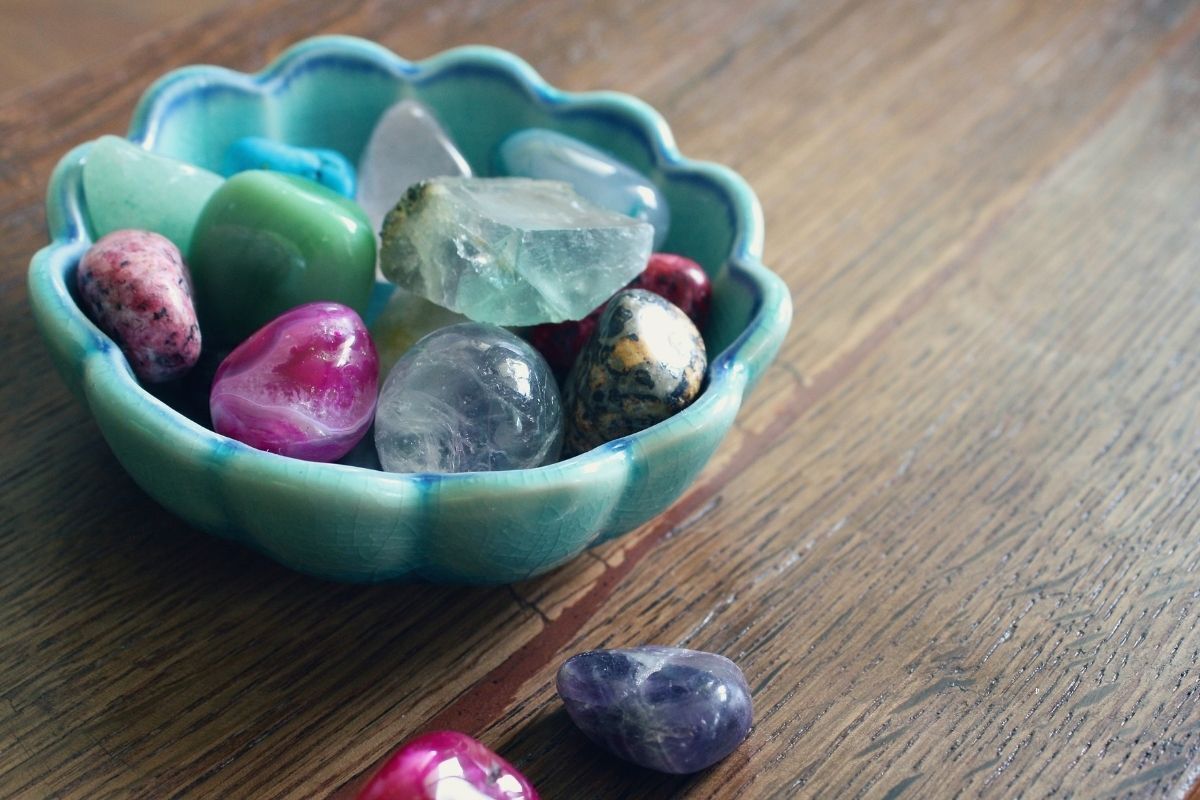
We have seen so far that there are three types of crystal origins, but what are the types of crystals that can be organized according to these origins? As we will show below, a crystal can be natural, cultured, synthetic, artificial, among other types. Find out below their meanings with their respective origins!
Gems
Gems are studied and described through technical specifications. The first of these is their chemical composition. Diamond, for example, is formed only by carbon (C), while Sapphire consists of aluminum oxide (Al3O4). Another quite essential way to classify them is the crystalline system.
Gems can have cubic, trigonal, tetragonal, hexagonal, orthorhombic, monoclinic or triclinic crystalline systems. Finally, they are classified into groups, species or varieties. Beryl, for example, has blue (aquamarine) and green (emerald) variations. Learn more about the different classifications of gems below.
Natural gemstones
Natural gems are used for personal adornment in the form of jewelry or accessories. Within this group, it is possible to arrange crystals into two distinct groups: mineral and organic.
Some examples of natural mineral gems are:
- Aquamarine;
- Amethyst;
- Citrus;
- Diamond;
- Emerald;
- Grenada;
- Quartz;
- Ruby;
- Sapphire;
- Topaz;
- Tourmaline.
Some examples of organic natural gems are:
- Amber;
- Flounder;
- Choral;
- Pearl.
Cultured pearls
Although pearls occur naturally in nature, the vast majority of pearls available on the market are cultured. When we talk about cultured pearls, we are referring to a pearl that has been "implanted" inside an oyster, on an oyster farm.
Because they are cultured, these types of pearls are more affordable than naturally occurring pearls. Depending on the species of oyster and the way they are cultured, pearls can have different properties and colors. Some examples of cultured pearls are Biwa pearls, Mabe pearls, South Sea pearls and Tahiti pearls.
Synthetic Gems
As the name suggests, synthetic gems are those that are produced artificially by industry. Although many of them are made of natural material, because they are synthesized by scientists in a laboratory, they do not have the same market value as natural gems.
Depending on the technology used, it is possible to reproduce the appearance and properties of a natural gem very faithfully. Examples of synthetic gems include the synthetic ruby, the synthetic emerald and the synthetic diamond. Most of these gems sold on the market are made in a laboratory.
Artificial Gemstones
Artificial gems refer to a group of gems that are produced in a laboratory. Unlike synthetic gems, which can occur naturally in nature, artificial gems are only obtained in the laboratory.
Examples of artificial gems include YAG (Yttrium Aluminium), GGG, cubic zirconia, fabulite etc.
Reconstituted gems
Another type of gemstone is the group of reconstituted gems, which consist, as the name suggests, of reconstituting gems. In this process, the dust or debris of a specific gemstone is collected and from them and some processes, such as the use of a glue, it is possible to reconstitute the gem as if it had been found complete in nature.
In other words, although the reconstitution process is not natural, the material used to reconstitute a gem is. Therefore, it contains part of its original properties.
These processes are very useful, as some gems, such as Turquoise, are difficult to find in a form suitable for jewelry. Other examples of gems commonly reconstituted are Amber, Malachite, and Lapis lazuli.
Treated yolks
One group of gems that is quite common is called treated gems. In this type, a natural gem is exposed to specific pressure and temperature conditions to make it possible to change its shape or even its color. In some cases, a gem is bombarded with metal particles to possess a more attractive appearance.
Some examples of treated gemstones are: Citrine (which is usually obtained by 'burning' Amethysts), irradiated Topaz and Aqua Aura crystal.
Highlighted Gems
Enhanced gems are those treated by processes such as dyeing or smeared with oil. Classic examples of enhanced gems are Ruby and Emerald, which are treated with oils to appear more brilliant.
Coated Gems
Coated gems consist of gems that are covered with a protective film that completely surrounds them. Emerald is a gem that is commonly coated to acquire a more beautiful green tone.
Composite Gems
As the name suggests, composite gems are those made up of one gem and another element. In this type, it is possible to obtain combinations such as two gems occurring naturally or, in some cases, fused with glass, for example. In nature, composite gems occur naturally.
Examples of composite gems are: Amethrine (amethyst + citrine) and Azurite with Malachite. Both occur naturally.
Noble metals
Noble metals are those that react little to environmental conditions. They are therefore resistant to oxidation (rust) and corrosion, which makes them more valuable than metals considered vile, such as iron and zinc, which oxidize easily. Examples of noble metals are gold, silver and those that make up the platinum group.
Gold
Gold is the noble metal ruled by the Sun and linked to fire. It is considered the noblest among metals and is therefore associated with victory, success, wealth, leadership, money, health, beauty and prosperity.
Silver
Among metals, silver is a noble metal ruled by the Moon and the water element. With feminine energy, it is associated with the Goddess, the divine creative principle in many religions, as is the case of Wicca.
Platinum group
The platinum group consists of 6 chemical elements of the periodic table: rhodium, ruthenium, platinum, iridium, osmium and palladium. Among these, the noble metals most commonly used in jewelry are platinum, palladium and rhodium.
Ornamental stones
Among the other stones, the ornamental ones are those used as part of the decoration. Often used in construction, they usually adorn temples and different historical monuments around the world.
Decorative Minerals
Decorative minerals are an entire group of ornamental stones. As the name implies, they are used for interior decoration, and the most common types are: Sodalite, Agate, Malachite, Quartz and Alabaster.
Ornamental rocks
The ornamental rocks are a group of ornamental stones that are used to make architectural finishes. Thus, as examples of these stones, one can cite marble, slate and granite.
Main names and characteristics of gemstones
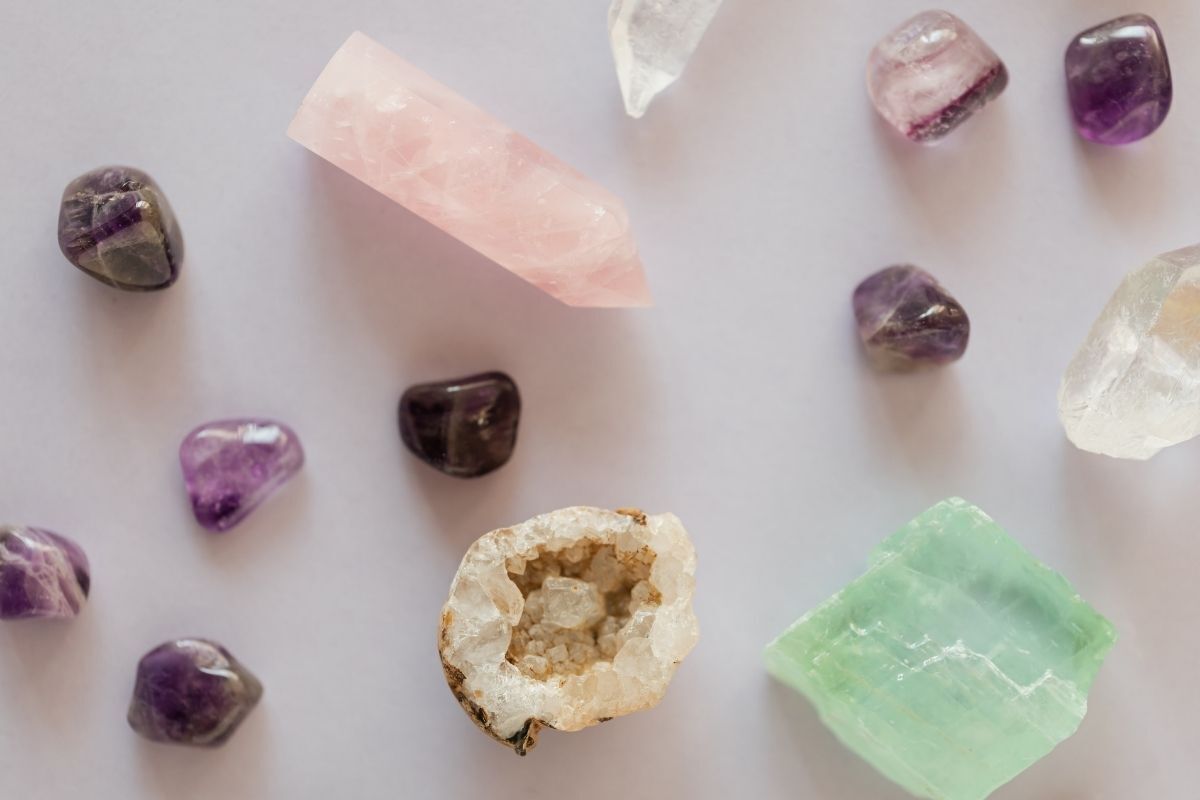
Now that you can identify the main forms and types of gemstones found in the market, it is finally time to talk a little more about them. We chose precious and semi-precious stones for the most diverse purposes, pointing out their energetic properties and their effects on the physical, spiritual and emotional body. Check it out!
Diamond
Considered the most powerful gemstone, the Diamond is one of the most expensive crystals that exist. Linked to love and eternity, since one of its properties is indestructibility, the Diamond usually adorns wedding rings to represent the love that transcends the boundaries of time.
In the physical field, it promotes healing, since it releases negative energies trapped in the aura that can cause diseases. Because it is extremely expensive, you can replace it, with a lower energetic power, by a 100% transparent Quartz crystal.
Ruby
The Ruby is ruled by Mars. Ideal for attracting passions, this precious gemstone develops the seductive side of its wearer. Being excellent for protection, the more vivid red the Ruby is, the more powerful it is.
In the physical field, this stone stimulates the blood and is related to the reproductive function of the body. It can be used to control sexual impulses and even to bring more sexual pleasure, as it helps to channel desire.
Esmeralda
Ruled by Venus, the Emerald is a precious gem of intense green tone. It can be used to attract love, increase your protection and bring money. It is also excellent for improving the reasoning, since it connects its wearer to higher planes, bringing wisdom.
If you are looking to find love or improve your interpersonal relationships, Emerald is the right crystal for you. Preferably, wear it over your heart chakra, while imagining yourself surrounded by nice people. Also, it is quite expensive, but you can purchase it in its raw form, which is quite inexpensive.
Sapphire
Sapphire is a gemstone whose rulers are the moon and the element of water. Its powers are related to love, money and psychism. Besides, being linked to the moon, it can be used to develop intuition, work the mind and increase protection and luck.
To awaken your intuition, leave a Sapphire over the third eye chakra, located between the eyebrows. It is also related to hearing healing, and a Sapphire pendant is an excellent amulet against spells.
Pearl
In fact, the Pearl is not a stone in itself, but it falls into the category of precious crystals. Ruled by the Moon, Neptune and the element of water, it establishes a link with the energy of the divine.
It increases the protection of the wearer and makes others perceive your intentions more easily. It is a crystal that serves to bring emotional support and is linked to the female reproductive system. So, whenever you wish to increase your powers, soak your Pearl in sea water.
Aquamarine
Aquamarine is a stone linked to the energies of the oceans. Ruled by the element of water, its greenish blue color relates it to the realm of emotions, bringing peace, happiness and calm and connecting its users with the healing energy. It is a very important crystal for water sign natives (Cancer, Scorpio and Pisces).
It can be used for developing intuition and psychic abilities, especially when used on nights of a full moon. Although it can be found more affordably, its purest form is quite expensive. In addition, it is most powerful when bathed with seawater.
Quartz
Quartz is one of the most versatile crystals that exist. Extremely popular, a good part of the electronic products we consume are made of this semi-precious stone. Pure transparent Quartz is extremely powerful, as it is directly connected to the higher planes.
As a consequence, it is used in spiritual journeys for personal development and to reach stages of divine wisdom. In the field of healing, it can be used to energize and repair energetic leaks that cause illness. Carry it whenever you want to increase your intuition and protection.
Topaz
Topaz is a crystal that brings balance to the body, soul and emotions. Excellent for containing the temper of impulsive people, it also increases personal magnetism, attracting what its user most desires.
If you are someone who is jealous, connecting with the energy of Topaz will help you curb your jealous outbursts. It is excellent for aiding communication and is therefore commonly used near the throat chakra to bring more clarity and heal the areas related to the voice.
Amethyst
Amethyst, a violet form of Quartz, is a semi-precious stone that is closely linked to femininity. Its powers are closely linked to healing and happiness. Excellent for transmuting the energies of people and environments, it has become very popular for attracting protection and peace to those who use it.
Its violet energy creates an atmosphere of peace of mind, which also reverberates positively in the health of its users, calming them and treating issues related to mind and anxiety. So, whenever you need to calm down, press an Amethyst over your heart.
Enjoy all the types and benefits of gemstones!
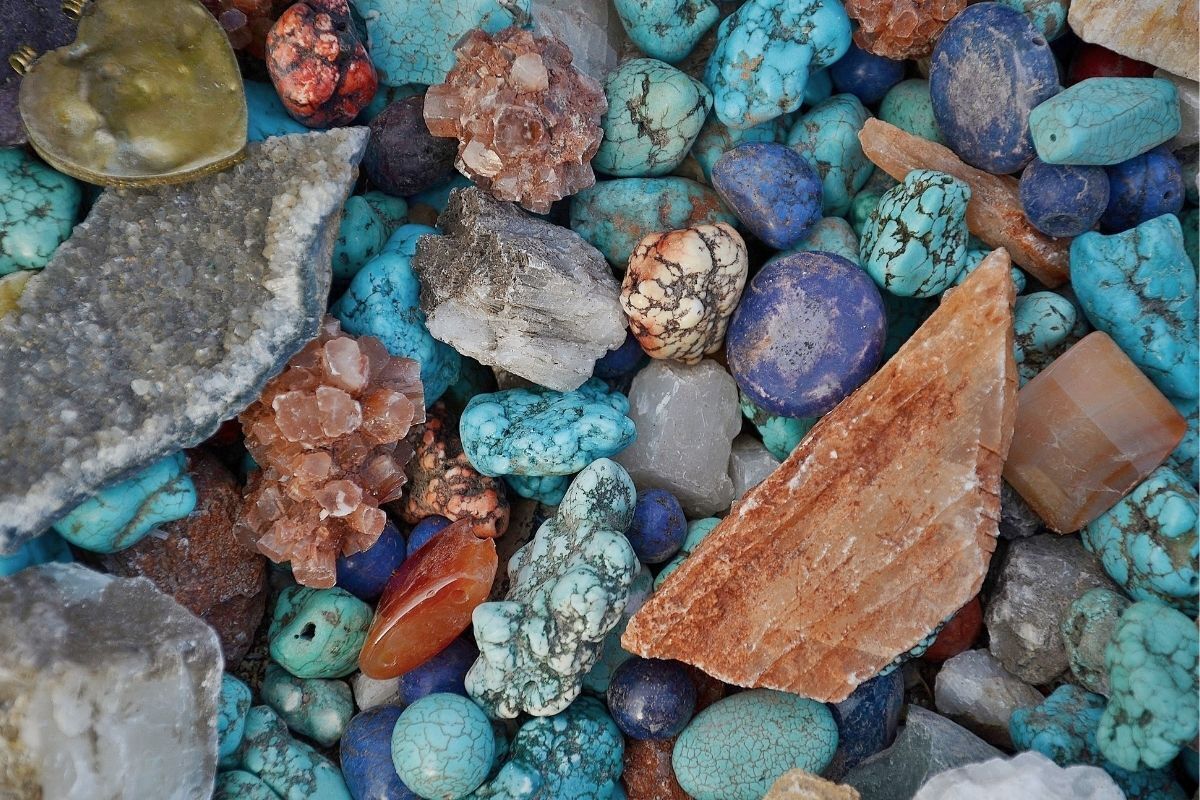
Gemstones have many uses. Besides being extremely attractive to the eye, as they are used to create adornments and personal accessories, such as jewelry, they reveal elegance and status of its users and possess energy.
As we have shown, gemstones, as well as many other naturally formed minerals and elements, are considered crystals. Each crystal has a specific energy, which is determined not only by its color or vibration, but also by the chemical elements that constitute it.
Because they have been used throughout history, crystals have a very strong energetic charge, which can bring energetic and healing benefits to your life, as they have the power to align you with nature, since they are considered the bones of gaia herself. So, use the information in this article to find the ideal crystal for you and enjoy all its benefits!

